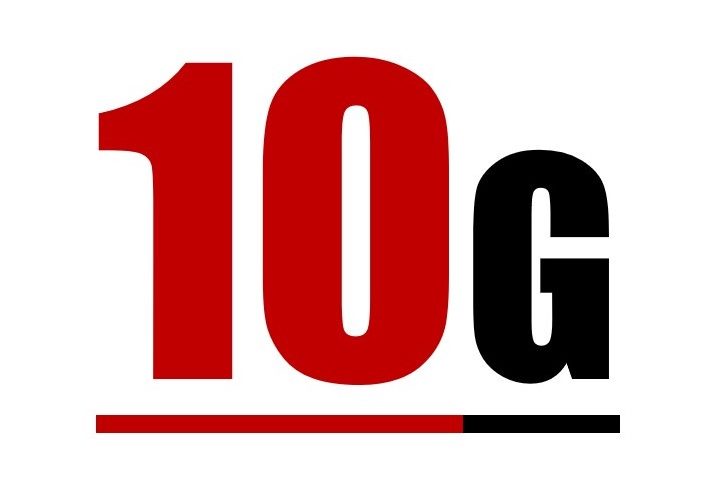
NEW ORLEANS – Just in case there was any doubt about it, the cable industry made it clear last week that it's committed to, perhaps even fixated on, delivering symmetrical speeds of at least 10 Gbps over both wired and wireless networks sometime in the very near future.
Speaking at the SCTE/ISBE Cable-Tec Expo show here last week, top cable business and technology executives stressed the industry's nearly year-old 10G initiative is now their top priority and will remain so for some time to come. "In many ways, it really is our battle flag," Michael Powell, president and CEO of the NCTA, said during an opening session discussion. "It is the stake we put in the ground to rally around and to demonstrate our rightful place on the cutting edge of the future of this country's information ambitions."
Powell, who first trotted out cable's "10G" branding effort during last fall's SCTE/ISBE Cable-Tec Expo show in Atlanta, brushed aside concerns that the industry was deliberately sowing market confusion between cable's 10G push and the wireless industry's 5G rollout. Noting that 5G services will need the solid underpinning of 10G networks, he said industry officials chose the 10G branding to "invite the comparison to 5G."
Despite cable's ambitious 10G push, it's still not clear exactly what apps and services will require such high symmetrical speeds and when those capabilities will actually be needed, or desired, by subscribers. However, cable technologists don't appear to be too fazed by that uncertainty right now. "I don't think there's one silver bullet… on why 10G is needed," Bob Ferreira, general manager of strategy and technology for Intel's Connected Home division, said later in the same session where Powell spoke.
At the same time, some ideas are beginning to percolate about the type of services and applications which might require such large capacities, as well as the timing of their rollout and the bandwidth needed to support them.
Speaking at a pre-conference event focused on 10G, Tom Cloonan, the CommScope CTO team's chief technologist for network solutions, conceded he can't be sure when such great capacities will be needed, but Cloonan, who's famous in the industry for drawing up capacity models for the future, estimated his current models indicate that 10 Gbps speeds could be needed by 2029. He sees cablecos needing to offer "at least" 10 Gbps capabilities on their access networks by 2035.
As for what kinds of rich broadband services and apps will run over 10G networks, Cloonan noted that some already known examples include virtual reality (VR) and augmented reality (AR) video services, which might require as much as 600 Mbps per stream for a "retinal immersive experience level." He also cited light field displays, which could eat up 800 Mbps per stream on an uncompressed basis, as well as Star Trek-like holographic displays and next-gen media services that haven't even been dreamed up yet.
While the breakneck speeds envisioned under the industry's 10G initiative still command most of the spotlight, cable technologists at the show highlighted some other key enhancements which are part of the ambitious effort. The roster includes such key features as low latency, security and reliability.
For instance, Intel's Ferreira stressed baking low-latency capabilities into the 10G pie is "critical" and just as important as the higher speeds. He noted next-gen media services like AR/VR, cloud gaming and light field displays will all need both higher bandwidth and lower latency levels.
“We create the bandwidth and customers use it.” – Tony Werner, Comcast
Not surprisingly, then, CableLabs has made low latency a prime area of focus for DOCSIS 4.0, the industry's upcoming broadband spec designed to support symmetrical speeds of 10 Gbps or more. Ferreira added CableLabs plans to conduct five interoperability testing sessions around low latency between now and next June, enabling field trials to start by mid-year with an initial focus on online gaming.
Ferreira said Intel has already been working in its gaming lab on some "simplified" low-latency DOCSIS features, including multi-service flows (such as a queue for the gaming traffic) and proactive granting of network resources. He said the tests have driven latency levels down below 10 milliseconds for multi-player games.
Turning to security, the 10G initiative is focusing on a wide range of areas, including protecting customer privacy, confidentiality and the integrity of messages and other data. "The reality of 10G" is "it has to be about all of those," said Brian Scriber, distinguished technologist and vice president of security technologies at CableLabs. With service providers facing both internal and external threats to their access networks, he noted the enhanced speed and latency capabilities of a 10G-enabled network will make them a prime target for pirates and hackers.
Then there's increased network reliability. Those future services that need more capacity and lower latencies "will have much greater demand on our networks," said Alberto Campos, a fellow at CableLabs. He called reliability "the art of avoiding failure."
In his talk, Cloonan also served up some estimates on just how much HFC bandwidth the upcoming 10G era will require. He said cablecos will need about 1.3GHz of RF spectrum to support 10 Gbps downstream speeds and about twice that amount for symmetrical 10 Gig service. In total, Cloonan believes that about 3.6GHz of spectrum will be needed.
While it's not yet clear how cable operators will leverage their symmetrical 10 Gbps capacity, industry executives seem pretty certain that such capacity will be critical as new services and apps emerge, just as they have after every other boost in bandwidth. "We create the bandwidth and customers use it," Tony Werner, president of technology, product and experience at Comcast Cable, noted in an on-stage chat with Ferreira. "I think it's going to be reality, and I think it's meaningful."


